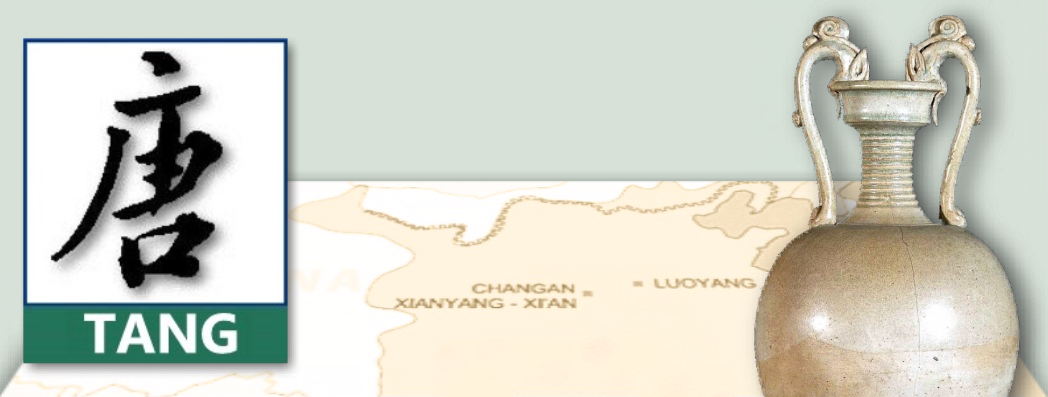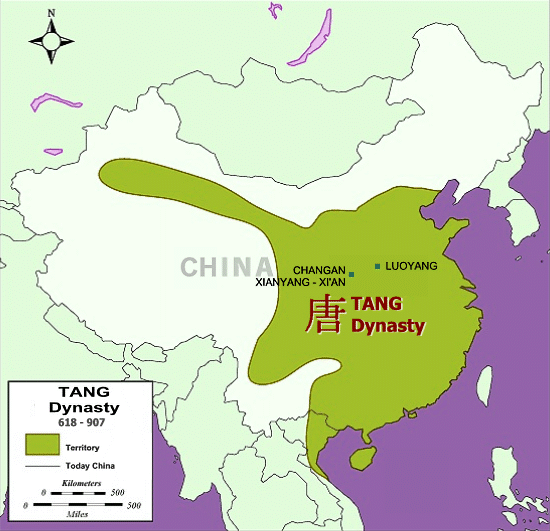618 - 907: Tang Dynasty

Image above - Amphora with dragon-shaped handles
Glazed stoneware - Dynasty Tang (618-907)
Founded by the Li family, the Tang Dynasty reigned for nearly three centuries (618-907 AD), briefly interrupted by the Second Zhou Dynasty (690-705). With its capital at Chang'an (today's Xi'an), this dynasty is often described as the summit of Chinese civilization, a period of peace and prosperity, secured by armies ready to defend the borders of the empire, which favored the flourishing of artistic productions. The capital Chang'an was a great metropolis, an attraction for diplomats from around the globe. It was truly China's "Middle Kingdom."
There is the return of Confucianism, taught in the education system and required by all in public office.
The first missionaries begin to preach Nestorian Christianity, building churches and temples, and translating their sacred texts. Buddhism also increases, due to trades with India, although it experienced a decline towards the end of the 9th century.
The Silk Road, safer and more popular, becomes an economic resource for the entire empire, enriching the Tang Dynasty with new technologies and cultural lifestyles of the Middle East, India, and Persia; there are new ideas about dress, new types of ceramics (tricolor figurines tombs, ceramics sancaicovered with lead, cobalt blue enamels), and the development of silverware. The figure of the dragon is replaced by sculptures of horses and camels (symbols of power) placed in the tombs of the aristocracy, along with ornaments of gold and silver. Famous are the poets, painters and writers of historical and geographical encyclopedias of this period. There is the growth of woodblock printing for the masses, and the flourishing of art and culture.
In the powerful capital Chang'an there is also great religious tolerance, with Buddhism that promotes varied sculptural and painted art. In fact, during the Tang dynasty, painting acquires high levels of artistic quality, through its landscapes. Even statues making takes on high artistic levels, as evidenced by the statue of the Buddha in Longmen caves (Henan), by the guardians of the shrines (marked with musculature), and figurines of court ladies, dancers or music players highly appreciated for their elegance.
The golden age of the Tang dynasty saw its end for various reasons: the floods of the Imperial Canal (858) that led to the death of thousands of people; the disastrous drought and famine of 873; and the revolts of General Zhu Wen (who founded the Liang Dynasty, the first of the Five Dynasties) in the beginning of the 9th century. These events weakened the central control of the Tang emperors.



